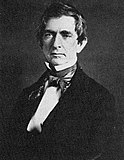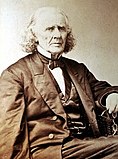Background
Barnburner John Adams Dix had been elected in 1845 to this seat after the resignation of Silas Wright, and Dix's term would expire on March 3, 1849. In November 1848, Dix was the Barnburners/Free-Soilers candidate for Governor of New York, but was defeated by Whig Hamilton Fish.
At this time the Democratic Party in New York was split in two fiercely opposing factions: the "Barnburners" and the "Hunkers". The Barnburners organized the Free Soil Party in 1848 and nominated Martin Van Buren for U.S. President. Due to the split, the Whig Party won most of the elective offices by pluralities.
At the State election in November 1847, 24 Whigs and 8 Democrats were elected for a two-year term (1848-1849) in the State Senate. At the State election in November 1848, 106 Whigs, 15 Free Soilers and 7 Hunkers were elected to the Assembly for the session of 1849. The 72nd New York State Legislature met from January 2 to April 11, 1849, at Albany, New York.
The Barnburners and Hunkers were the names of two opposing factions of the New York state Democratic Party in the mid-19th century. The main issue dividing the two factions was that of slavery, with the Barnburners being the anti-slavery faction. While this division occurred within the context of New York politics, it reflected the national divisions in the United States in the years preceding the American Civil War.
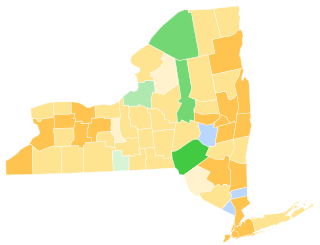
The 1848 New York state election took place on November 7, 1848, to elect the governor, the lieutenant governor, a Canal Commissioner and an Inspector of State Prisons, as well as all members of the New York State Assembly.

The 1849 New York state election was held on November 6, 1849, to elect the Secretary of State, the State Comptroller, the Attorney General, the State Treasurer, the State Engineer, a Judge of the New York Court of Appeals, a Canal Commissioner and an Inspector of State Prisons, as well as all members of the New York State Assembly and the New York State Senate.

The 1853 New York state election was held on November 8, 1853, to elect the Secretary of State, the State Comptroller, the Attorney General, the State Treasurer, the State Engineer, two Judges of the New York Court of Appeals, a Canal Commissioner, an Inspector of State Prisons and the Clerk of the Court of Appeals, as well as all members of the New York State Assembly and the New York State Senate.
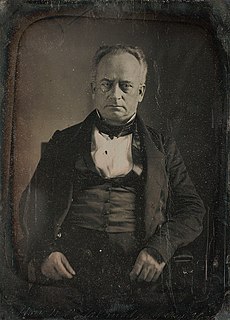
The 1839—1840 United States Senate election in New York was held on February 5, 1839 and January 14, 1840. Incumbent Senator Nathaniel P. Tallmadge was re-elected to a second term in office over scattered opposition.

The 1845 United States Senate special election in New York was held on January 18, 1845 by the New York State Legislature to elect two U.S. Senators to represent the State of New York in the United States Senate. The regular 1845 United States Senate election in New York was held on February 4, 1845, to elect a U.S. Senator to represent the State of New York in the United States Senate.

The 1851 United States Senate election in New York was held on February 4 and March 18/19, 1851, by the New York State Legislature to elect a U.S. Senator to represent the State of New York in the United States Senate.

The 1855 United States Senate election in New York was held on February 6, 1855, by the New York State Legislature to elect a U.S. Senator to represent the State of New York in the United States Senate.
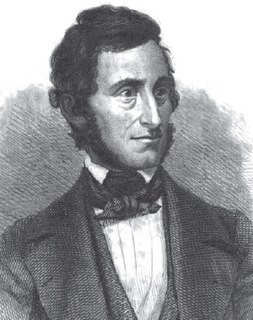
The 1857 United States Senate election in New York was held on February 3, 1857 by the New York State Legislature. Incumbent Whig Senator Hamilton Fish did not stand for re-election. The seat was won by Preston King, a former U.S. Representative and member of the newly-formed Republican Party. King was the first Republican elected to represent New York, although William H. Seward had joined the party after being elected as a Whig in 1855.

The 1863 United States Senate election in New York was held on February 3, 1863, by the New York State Legislature to elect a U.S. Senator to represent the State of New York in the United States Senate.
The 1850 and 1851 United States Senate elections were elections which had the Democratic Party lose seats, but retain a majority in the United States Senate.
The 1848 and 1849 United States Senate elections were elections which had the Democratic Party lose seats but maintain control of the United States Senate.
The 1854 and 1855 United States Senate elections were elections which saw the final decline of the Whig Party and the maintained majority of the Democrats. Those Whigs in the South who were opposed to secession ran on the "Opposition Party" ticket, and were elected to a minority. Along with the Whigs, the Senate roster also included Free Soilers, Know Nothings, and a new party: the Republicans. Only five of the twenty-one senators up for election were re-elected.
The 1842 and 1843 United States Senate elections were elections which had the Whigs lose seats but maintain control of the United States Senate. Although they lost three seats in the regular elections, they gained two of them back by the start of the first session in special elections.

The 68th New York State Legislature, consisting of the New York State Senate and the New York State Assembly, met from January 7 to May 14, 1845, during the first year of Silas Wright's governorship, in Albany.

The 72nd New York State Legislature, consisting of the New York State Senate and the New York State Assembly, met from January 2 to April 11, 1849, during the first year of Hamilton Fish's governorship, in Albany.

The 73rd New York State Legislature, consisting of the New York State Senate and the New York State Assembly, met from January 1 to April 10, 1850, during the second year of Hamilton Fish's governorship, in Albany.

The 77th New York State Legislature, consisting of the New York State Senate and the New York State Assembly, met from January 3 to April 17, 1854, during the second year of Horatio Seymour's governorship, in Albany.

The 78th New York State Legislature, consisting of the New York State Senate and the New York State Assembly, met from January 2 to April 14, 1855, during the first year of Myron H. Clark's governorship, in Albany.

The 79th New York State Legislature, consisting of the New York State Senate and the New York State Assembly, met from January 1 to April 9, 1856, during the second year of Myron H. Clark's governorship, in Albany.
